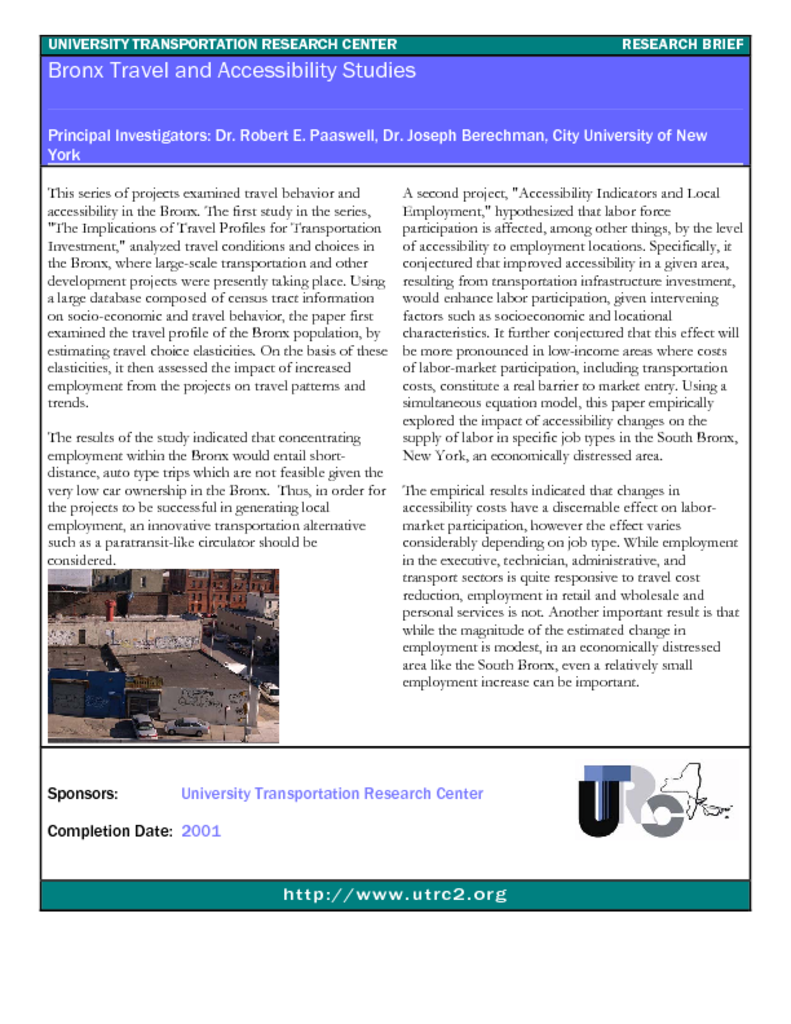This series of projects examined travel behavior and accessibility in the Bronx. The first study in the series, "The Implications of Travel Profiles for Transportation Investment," analyzed travel conditions and choices in the Bronx, where large-scale transportation and other development projects were presently taking place. Using a large database composed of census tract information on socio-economic and travel behavior, the paper first examined the travel profile of the Bronx population, by estimating travel choice elasticities. On the basis of these elasticities, it then assessed the impact of increased employment from the projects on travel patterns and trends.
The results of the study indicated that concentrating employment within the Bronx would entail short-distance, auto type trips which are not feasible given the very low car ownership in the Bronx. Thus, in order for the projects to be successful in generating local employment, an innovative transportation alternative such as a paratransit-like circulator should be considered.
A second project, "Accessibility Indicators and Local Employment," hypothesized that labor force
participation is affected, among other things, by the level of accessibility to employment locations. Specifically, it conjectured that improved accessibility in a given area, resulting from transportation infrastructure investment, would enhance labor participation, given intervening factors such as socioeconomic and locational characteristics. It further conjectured that this effect will be more pronounced in low-income areas where costs of labor-market participation, including transportation costs, constitute a real barrier to market entry. Using a simultaneous equation model, this paper empirically explored the impact of accessibility changes on the supply of labor in specific job types in the South Bronx, New York, an economically distressed area.
The empirical results indicated that changes in accessibility costs have a discernable effect on labor-market participation, however the effect varies considerably depending on job type. While employment in the executive, technician, administrative, and transport sectors is quite responsive to travel cost reduction, employment in retail and wholesale and personal services is not. Another important result is that while the magnitude of the estimated change in employment is modest, in an economically distressed area like the South Bronx, even a relatively small employment increase can be important.
Publication Category


